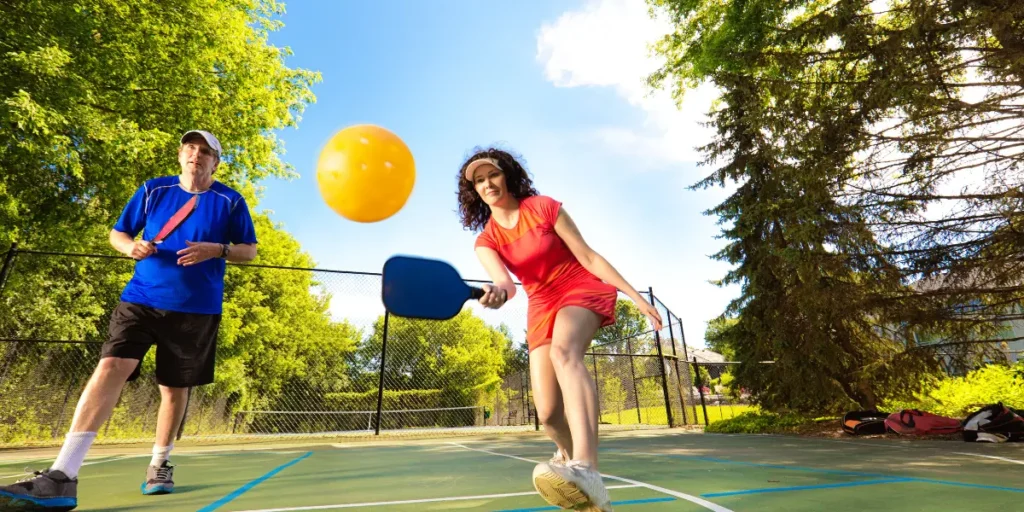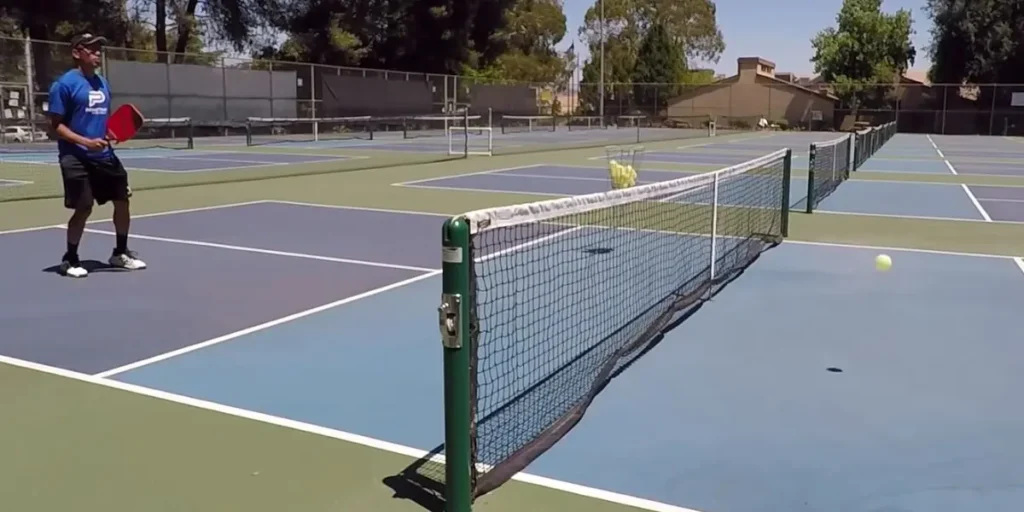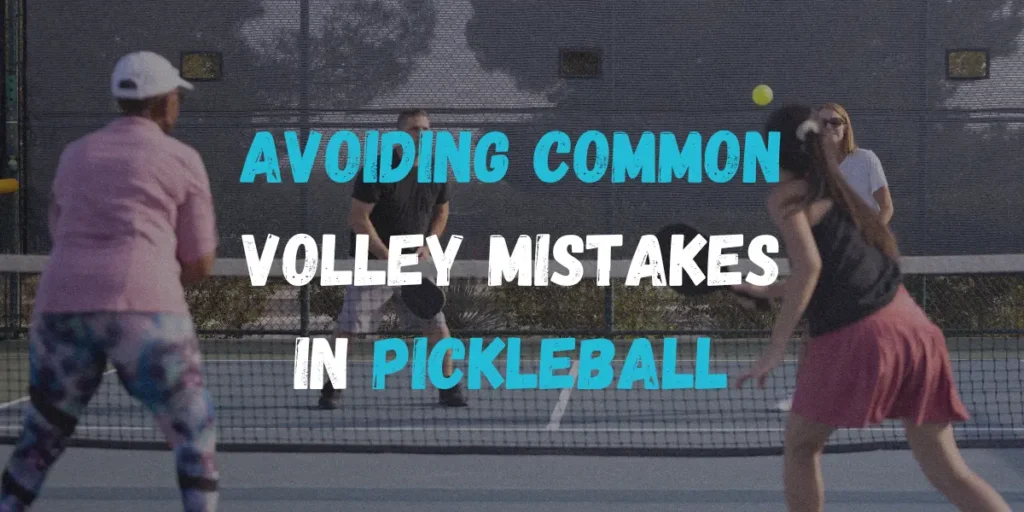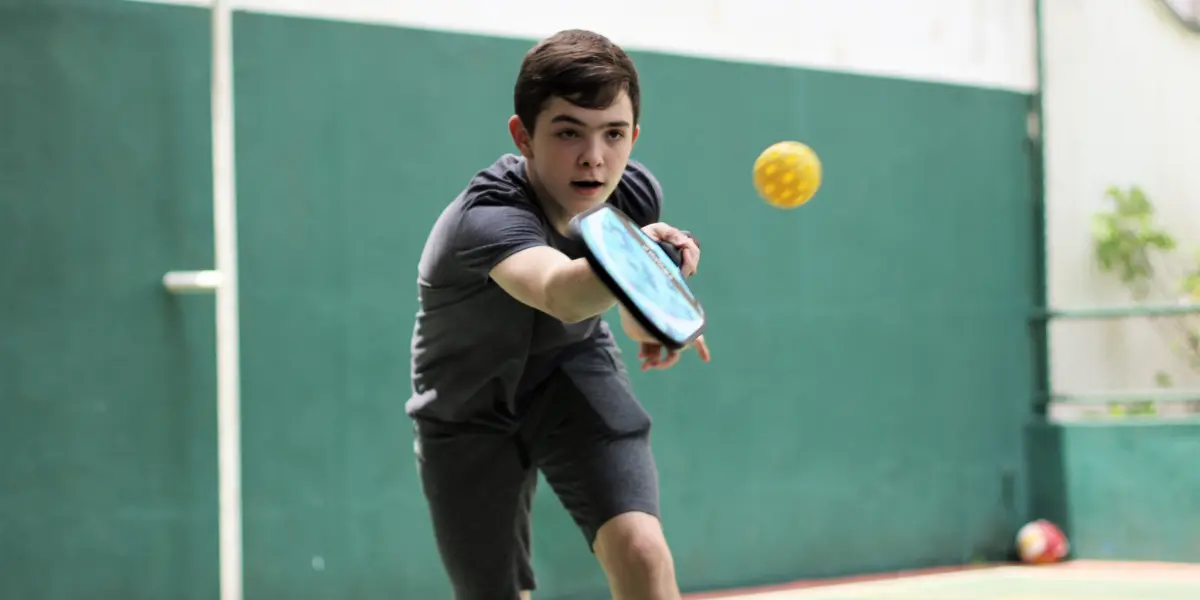Imagine being in the middle of an intense pickleball rally. Your opponent fires a shot, and instead of waiting for the bounce, you react instantly, striking the ball out of the air. That’s a volley—a technique that helps players stay in control, apply pressure, and take charge of the net.
Volleys are a key part of pickleball, allowing players to dictate the pace, challenge their opponents, and maintain strong positioning. Unlike groundstrokes that require a bounce, volleys demand quick reflexes and smart shot placement. Let’s explore how to improve your volley skills and use them effectively during a match
What is a Volley in Pickleball
A volley in pickleball is a shot where a player strikes the ball in the air before it bounces. This technique is most commonly used near the non-volley zone (NVZ), also called the kitchen, where fast reflexes and good paddle control are essential.
Why Are Volleys Important?
Volleys keep rallies fast and put constant pressure on opponents. A well-placed volley can force errors, leading to weak returns or outright faults.
Players who use volleys well gain a strategic advantage by creating angles and limiting their opponent’s options.
Additionally, volleys allow a seamless transition from defense to offense, turning a defensive block into an aggressive put-away shot. Knowing when and how to volley can take your game to the next level and help you win crucial points.
Where Can You Volley?
Volleys are an effective strategy, but they are not allowed inside the kitchen unless the ball has bounced first. This rule prevents players from standing at the net and smashing every shot downward. That’s why positioning just outside the NVZ is key to executing volleys effectively.
What is a Half Volley in Pickleball
A half volley is a shot where a player hits the ball immediately after it bounces. Unlike a traditional volley, this requires precise timing and control.

This shot is useful when a player doesn’t have time to step back for a full groundstroke but still wants to stay in control.
A well-executed half-volley absorbs the ball’s energy and redirects it with minimal backswing. It’s especially helpful when returning fast shots near the kitchen line or when caught in a defensive position.
Rules of Volleys in Pickleball
- Volleys must be executed from behind the non-volley zone line (also called the kitchen line). Players cannot step into or touch this zone during or immediately after volleying.
- Momentum after a volley cannot carry the player into the non-volley zone; doing so results in a fault.
- The ball must go over the net and land inside your opponent’s area. If the ball hits the net and falls back on your side, or goes outside the opponent’s area, you lose that rally.
- Volleying is only permitted after the double-bounce rule has been satisfied, meaning each team must allow the ball to bounce once before volleying becomes legal.
Types of Pickleball Volleys & When to Use Them
Not all volleys are the same. Different situations call for different techniques and understanding which volley to use when can be the key to controlling a match. Here are the four primary types of volleys in pickleball:
Punch Volley (Power & Precision)
A punch volley is the most common type of volley and is used for aggressive play. It involves a quick, firm forward motion where the paddle acts almost like a boxing glove, “punching” the ball toward the opponent.
Keeping your paddle perpendicular to the court and using a short, controlled motion from the elbow ensures better control. The key is to aim for your opponent’s feet, making it difficult for them to return the ball effectively.
Roll Volley (Topspin Attack)
A roll volley, or topspin volley, adds a forward spin to the ball, making it difficult for opponents to handle. The spin causes the ball to dip quickly after crossing the net, reducing its reaction time.
This technique is most effective when you want to push opponents deep into their backcourt or counter a soft return. The motion requires brushing the ball with a low-to-high paddle movement, ensuring the ball stays aggressive yet controlled.
Drop Volley (Soft Touch for Control)
A drop volley, also known as a block volley, is used when you need to reset the pace of the game. Instead of aggressively punching the ball, you absorb the energy and let it drop softly over the net.

This shot is particularly useful when your opponent is driving fast shots at you, and you need to neutralize their power. The technique involves loosening your grip, slightly angling your paddle upward, and allowing the ball to land gently in your opponent’s kitchen.
Dink Volley (Precision & Patience)
A dink volley is a strategic shot where you take a soft kitchen dink shot out of the air instead of letting it bounce. This keeps the opponent from gaining time to react and can put them in uncomfortable positions.
The key to executing a dink volley is maintaining a soft grip, using minimal paddle movement, and focusing on precise placement rather than power.
How to Improve Your Volley Game: Techniques & Drills
To refine your volleys and improve consistency, incorporate these proven drills into your training sessions.
One effective drill is the Wall Volley Drill, where you stand 3-4 feet from a solid wall and rapidly hit continuous volleys, focusing on control and paddle angle. The goal is to maintain a consistent rhythm and achieve 50 consecutive volleys without losing control.
Another valuable exercise is the Partner Reaction Drill, which involves standing at the kitchen line with a partner who sends volleys at varying speeds and angles.
This drill helps improve reflexes and ensures controlled returns under unpredictable conditions. Practicing reaction-based volleys allows players to sharpen their ability to respond quickly to fast-paced shots during real matches.
Lastly, the Dink-to-Volley Transition Drill is essential for players looking to enhance their soft-touch control while preparing for faster exchanges. It begins with slow dinking at the NVZ, then gradually incorporates volley shots, simulating real-game scenarios.
This drill develops the necessary skills to transition between soft and fast-paced shots seamlessly, a critical ability for high-level play.
Avoiding Common Volley Mistakes in Pickleball
Even skilled players make mistakes when volleying. Here are some errors to watch out for:

- Overusing the wrist: This leads to inconsistent shots. Instead, use your elbow and shoulder for control.
- Taking big swings: Volleys should be compact and controlled, not full, exaggerated swings.
- Poor footwork: Volleying isn’t just about the upper body. Good positioning is key, and being light on your feet helps with balance and quick reactions.
- Standing too close to the NVZ: If you’re too close, your momentum can carry you into the kitchen, resulting in a fault. This is a common mistake that costs many points.
Advanced Volley Strategies for Competitive Players
When to Volley Aggressively vs. Defensively?
Choosing between an aggressive and defensive volley depends on the pace of the rally and the positioning of your opponent.
Aggressive volleys work best when you receive a high ball that allows you to put pressure on your opponent.
Defensive volleys are necessary when the opponent is attacking, requiring you to block or reset the rally instead of counterattacking immediately.
How to Counter a Volley with a Drop Shot
A well-executed drop shot can neutralize an opponent’s aggressive volleying strategy. Instead of responding with equal force, use a soft touch to land the ball gently into the NVZ, forcing your opponent to step forward and reducing their ability to attack.
Using ATP (Around The Post) Volleys in a Match
An ATP volley is a high-level shot where the ball is hit outside the net post, landing within the opponent’s court. This technique is particularly effective when an opponent angles a shot wide, leaving the sideline open. Practicing ATP volleys can be a game-changer for competitive play.
FAQs
A volley is a shot hit before the ball bounces, usually taken near the net, while a groundstroke is hit after the ball bounces, typically from the baseline or midcourt.
No, the two-bounce rule in pickleball states that the serve must bounce once on the receiver’s side and the return must also bounce before either team can volley.
Volleying in doubles is crucial for maintaining control of the net, pressuring opponents, and dictating the pace of the game. Teams that master volley exchanges tend to dominate at the NVZ.
The continental grip is the most recommended grip for volleys, allowing quick transitions between forehand and backhand shots without the need for grip adjustments.
Yes, but it is uncommon. Volleys are most effective near the net, and volleying from behind the baseline often results in weak returns or lost positioning in the rally.
Conclusion
Mastering volleys in pickleball is one of the best ways to gain an edge over opponents. Whether using aggressive punch volleys, controlled dink volleys, or strategic drop shots, each type serves a unique purpose.
Avoiding mistakes like momentum faults and poor positioning will help improve your game. Regular practice, proper paddle control, and sharpening your reflexes will make volleys a strong part of your strategy.
Focusing on these techniques will allow you to take control of rallies, win more points, and become a stronger player overall.

